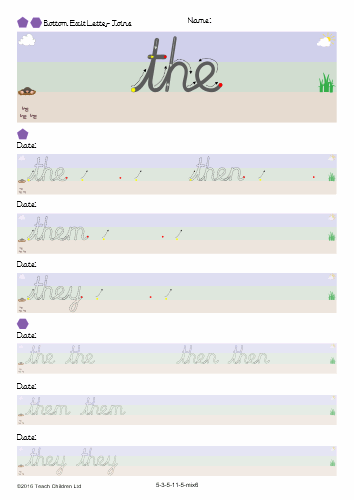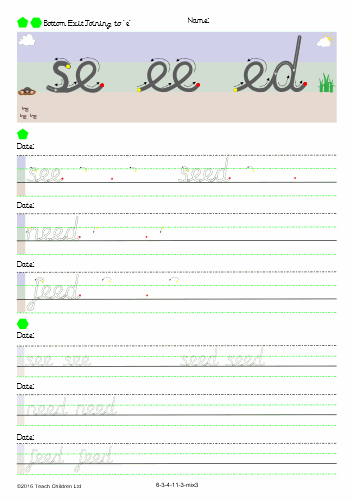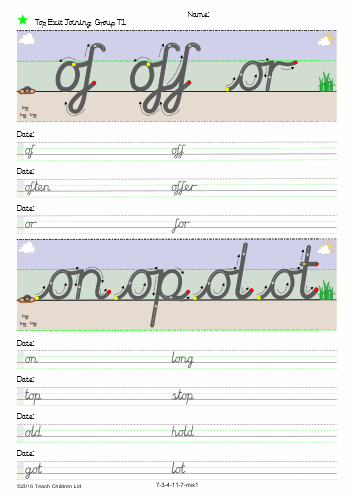Handwriting in Key Stage 3 & 4 (11 - 16 yrs)
Why teach handwriting in Key Stage 3 & 4
It is quite often said that by secondary school age it is too late to be addressing a student’s poor handwriting and that they are better off being given a computer for their work. If only this was true!
Legible, fluid and speedy handwriting is still very much a valid and important skill set for secondary school students to maintain or acquire.
The benefits of handwriting
- In exams, if using a computer, all word processing support elements such as grammar and spell checking have been removed. A student using a computer therefore has to have better compositions skills, understanding of grammar, punctuation, spelling, appropriate use of technical language and genre specific stylisation than a student who is handwriting because the handwriting process aids these skills.
- Research shows that students who take handwritten notes, rather than used a computer to type in what is being said, will retain more of the lesson. This is because they have had to take information in and gained some understanding before they can make their notes or acknowledge that they have not understood it and then placed a question or note to find out more. Typing is just recording what has been said.
- If a student has poor handwriting skills, due to poor fine motor skills, then they will also struggle to use a keyboard at speed.
- Supporting and teaching a student to correctly form their letters can also help them develop their reading skills as it helps them to develop their letter recognition. Handwriting requires a student to develop good motor and visual memory skills. The motor memory development of learning a letter shape supports and helps the visual memory recall what a letter looks like. Handwriting uses the same visual memory skill that is required for reading.
- Not all schools have enough computers for every student to have one in every lesson or specifically allocated for exams.
- Exams are the way we assess our student’s knowledge but they do not tell us if a student is suitable for a particular workplace environment. We have to support our students to achieve at all levels even though they may not use the skills in everyday life. Handwriting will always have some use: taking notes for other people, lists, filling in forms, remembering things (if we do not want to rely on technology to take away our ability to remember and think for ourselves).
Why students start secondary school with such poor illegible handwriting
- Not all Infant and Primary Schools teach handwriting correctly (even though it is a statutory requirement in the National Curriculum). Many seem to think that children will pick up handwriting through some kind of osmosis process. Children do not, it has to be taught correctly using a consistent and progressive approach.
- Handwriting in many cases is taught on teacher preference rather than one consistent approach throughout the school, if at all.
- Pencil grips and sitting position are not taught or corrected.
- Gross and fine motor skills have not always been fully developed throughout a student’s earlier school years.
- Some educationalists feel that handwriting has little value in a child’s early years education due to modern technology and the skills children will need in the workplace. Sadly, they have either forgotten or are unaware of how young children learn and the impact this can have.
- Many forget that computers are tools to support learning but not necessarily how we learn.
How to help your students
If your students are struggling with their handwriting it is either because they haven't been taught what to do or they don't have all the physical strengths needed to handwrite comfortably and so limit how / what they write.
Using the Key Stage 2 section of our website should help you identify the causes of the poor writing and provide ways to overcome them.
If you would like a more structured approach then we do sell a Secondary School Handwriting Recovery Program.
Secondary School Recovery Program - £275 + VAT
Our Secondary School Recovery Program takes a holistic view of teaching handwriting, developing both a student’s Key Strengths (Gross & Fine Motor Skills) and Key Abilities (Knowledge). It’s systematic, differentiated and progressive approach supports students of all ability levels.
The assessments and intervention program can be implemented by a teacher or trained support staff (teaching assistant). Assessments evaluate your students’ abilities and weaknesses. Based on these outcomes the program can be used to provide tailored support for them.
A generic eight-week intervention program provides a structured approach to improving your students handwriting. Obviously based on their current skill levels this will need to be adapted, and possibly extended, to accommodate their specific difficulties.

Key Abilities
Key Abilities lesson plans and resources support the intervention program and cover:
- Sitting - to sit at a table in an appropriate position for handwriting activities.
- Pen Grip - to use a pen and hold it effectively using an efficient grip.
- Paper Position and Tilt - to develop the ability to push the paper diagonally up a table with one hand; to promote good paper tilt and movement skills, while maintaining a good sitting position, for handwriting.
- Letter Formation
- Letter Formation - to correctly form letters of a consistent size and spacing in relation to each other. Being aware of the size relationship between capital and lower-case letter forms
- Joining Letters – to correctly join letters to develop a fluid, speedy and legible handwriting style.
- Improving speed and fluidity through dictation activities.
The Program teaches the capital letters together with your choice of the three main lower-case font styles taught in UK Primary Schools: print (manuscript), cursive and continuous cursive. Each font is taught in family groups.
Due to the wide range of primary schools that a secondary school has to cater for it is difficult to know how that intake has been, if at all, taught to handwrite. Even though the teaching of handwriting is a statutory requirement of the Foundation Stage, Key Stage 1 and Key Stage 2 National Curriculum it does not state which font or letter version are to be taught.
This also makes it incredibly difficult for a secondary school to implement one particular handwriting font style in their school. However, that being said, we would recommend the following:
- If a student has been taught a cursive font and their letter formation is correct for 50% of their lower-case letters and they have mastered some of the joining strokes, then they should continue to be supported in developing their handwriting using the same cursive font (Route C).
- For students who have less than 50% of their lower-case letters formed correctly and have very little, if any joining skills, we would recommend teaching them a continuous cursive font (Route D).
A few SEND students may need to be taught a print handwriting font style as due to their abilities they will be unable to move on to a cursive joined handwriting font.
It is important to look at each student’s needs on a case by case basis; making decisions based on practical and realistic solutions.
The Secondary School Recovery Program provides you with all four Teaching Routes, so that all your students can be catered for, all you have to choose is the letter version combination of w, x and z.
Cursive Letter Versions
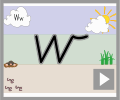
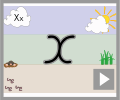
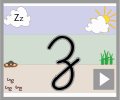
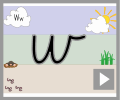
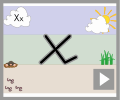
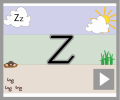






Version 1
Version 2
Version 3
Version 4
Continuous Cursive Letter Versions
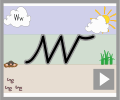
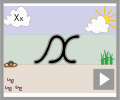
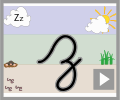

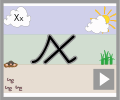
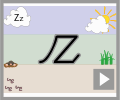






Version 1
Version 2
Version 3
Version 4
Key Strengths
Often handwriting difficulties are caused by poor gross and fine motor skills (Key Strengths). Without these skills students find it difficult to hold and manipulate a pen and sit correctly for long periods of time when completing handwriting tasks.
The Key Strength areas are supported in two ways:
1. Handwriting Session Warm Up Exercises
- These are integrated into the intervention handwriting sessions. They have been designed to be done sitting at a desk and focus more intently on the areas of the body required for handwriting. They help to relax muscle groups, developing and maintaining flexibility and dexterity. Tense muscles and stiff joints make handwriting hard work and a tiring experience.
2. P.E Warm Up & Cool Down Activities - Supporting:
- The Posture Base (Gross Motor Skills)
- The muscle groups that support the pelvis, trunk, shoulders and arms that allow them to work in a coordinated way; vital for maintaining a good sitting position.
- Bilateral Coordination (Gross Motor Skills)
- The use of the left and right sides of the body, needed for coordination and well-balanced movement; necessary to be able to handwrite freely across the whole width of the paper.
- Sensory Perception (Gross Motor Skills)
- The body’s ability to send accurate messages to the brain relating to touch, being touched and movement.
- Hand & Finger Strength (Fine Motor Skills)
- The strength and agility of the hands and fingers so that a student can manipulate, coordinate and have the correct muscle tone; helping a student manipulate a pen and thus form letter shapes.
As all teaching staff need to be familiar with the handwriting recovery program, although they may not be actively involved in it, a teachers’ section is included which provides information so they can support handwriting improvements in their lessons.
If you are interested in purchasing the program then either call us on 01298 938559 or send us your details through the Contact Us form.
Secondary School Recovery Program contents
- Secondary School Recovery Program Manual (Paper based)
- Memory stick containing worksheets, desktop crib sheets, alphabet friezes and lesson posters
- Your own school animation video channels - one for cursive and one for continuous cursive (hosted on Vimeo)
- Recovery Program Manual school photocopy licence
Secondary School Recovery Program Manual
The Recovery Program Manual includes:
- Student assessments:
- Sentence completion test.
- Single letter / symbol writing speed test.
- Handwriting legibility.
- Timed copying handwriting test.
- Handwriting skills observation checklist.
- Handwriting Recovery Program schedule
- Detailed, colour coded, lesson plans have been designed to be accessible to all educators and provide:
- lesson aims,
- learning objectives,
- resource list,
- lesson instructions, and
- plenaries (round up).
- Lesson plans cover:
- Pen grip.
- Paper position and tilt.
- Single letter formation.
- Letter joining.
- Dictation to build speed and fluidity.
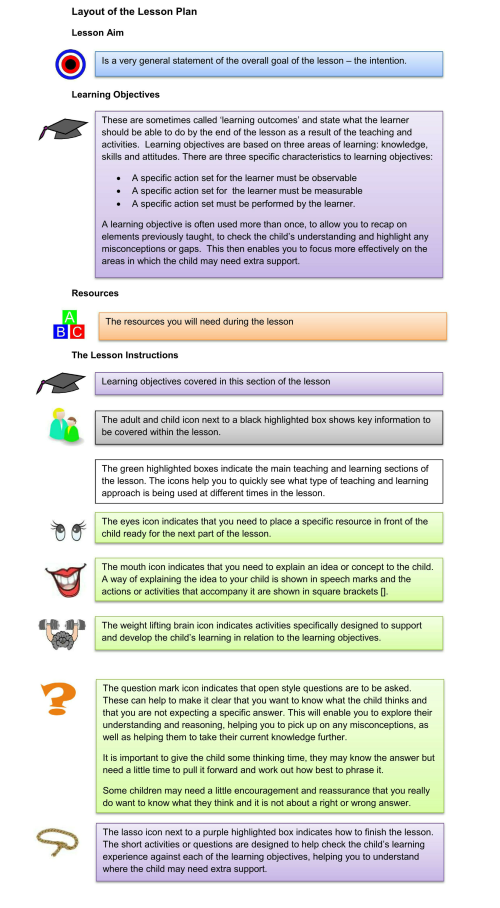
- Other Recovery Program Manual contents
- Gross and fine motor skills activities.
- Word lists.
- Differentiated dictation sentences.
- Staff handout information sheets.
USB Memory stick
On your USB stick there are over 1,000 worksheets that progress from large lined colour clue worksheets through to normal handwriting lined worksheets with colour prompts at the start of the line. You choose the correct worksheet for the students and only print what you need.
The posters you need for the lessons are also included together with desktop letter crib sheets and alphabet friezes.
The worksheet development level is identified by a colour and shape.
You get on your USB stick:
- 6 levels for pre-handwriting patterns
- 6 levels for capital letters
- 6 levels for lower-case letters
- 6 levels for joining letters
- 6 levels for numbers
- 6 levels for symbols
- 3 paper line styles for each level
School Animation Channel
Your animation channels - one for cursive and one for continuous cursive just hosts the videos for your chosen Letter Version.
In addition to the free animations on our website your channel has an animation to support every one of the Recovery Program worksheets.
School Photocopy Licence
As part of the Program the school is allowed to photocopy (not digitally copy), for its use only, from the Recovery Program Manual.


